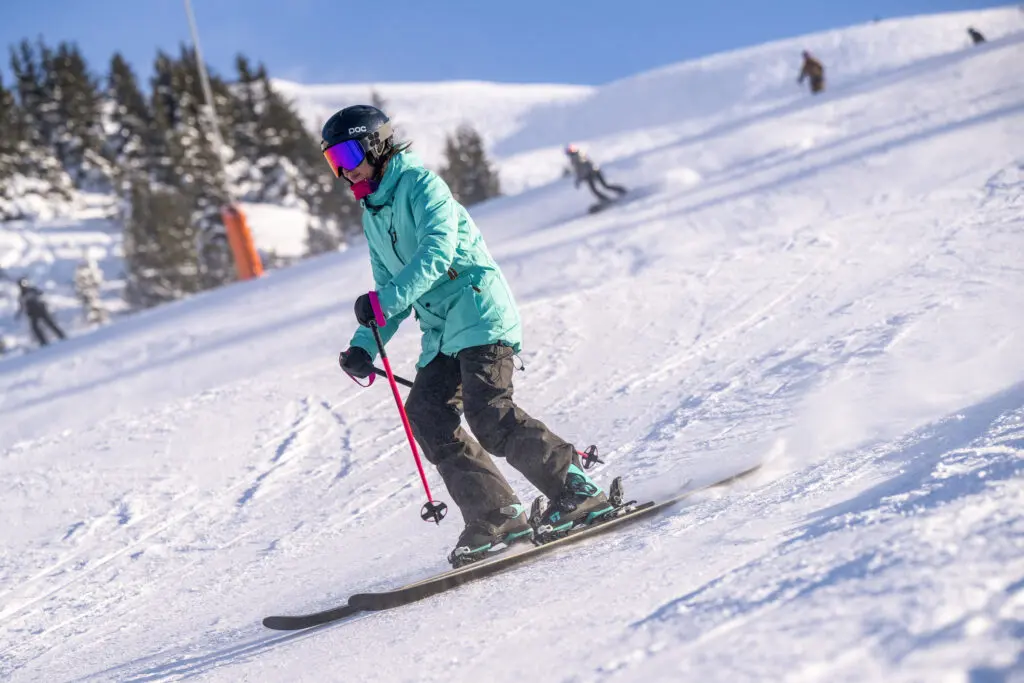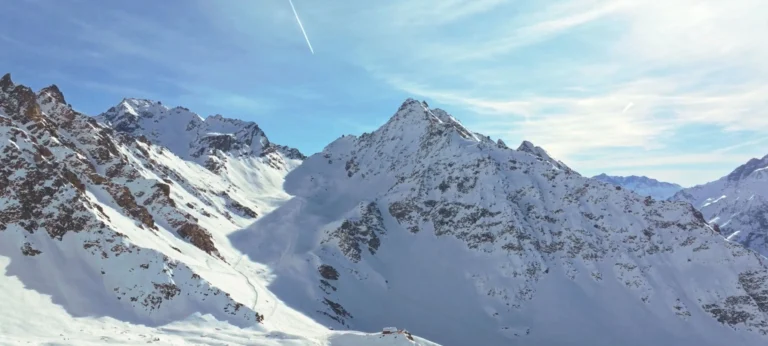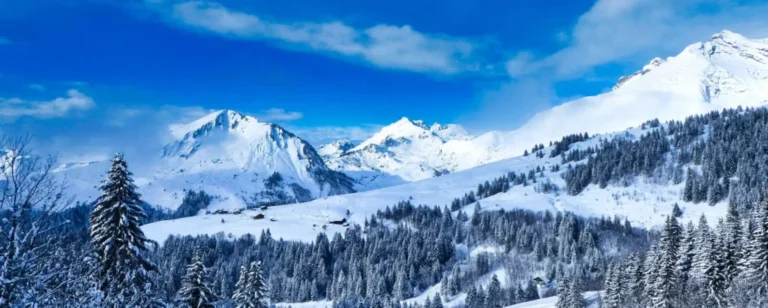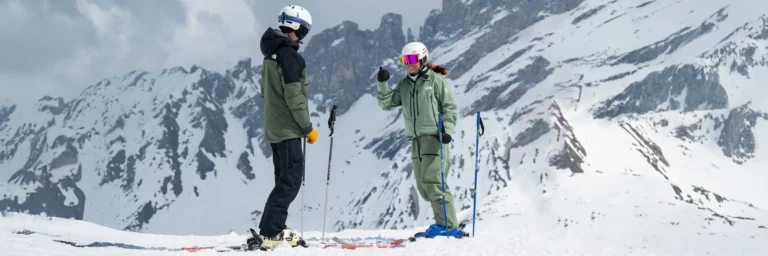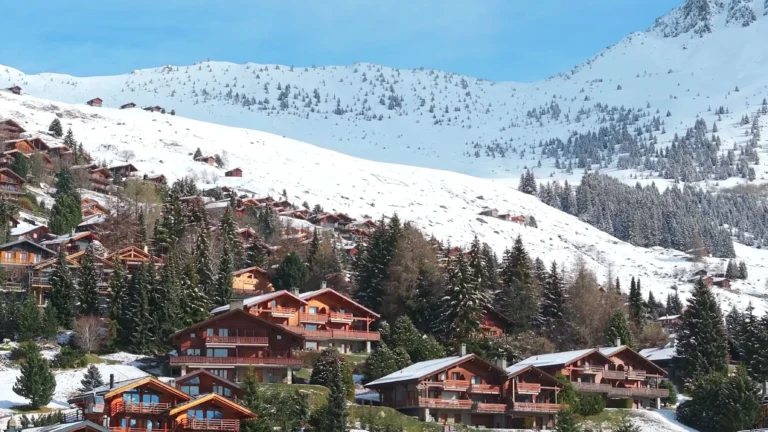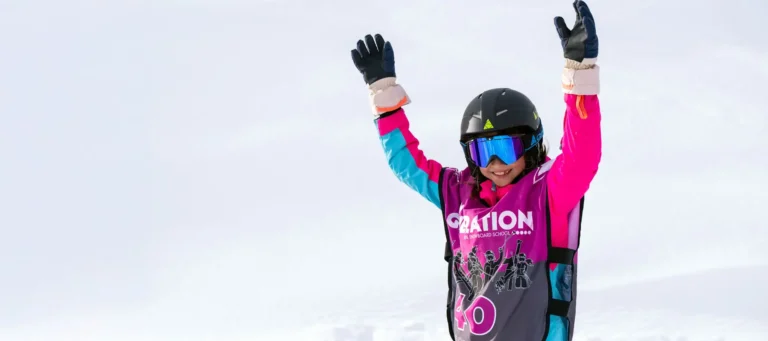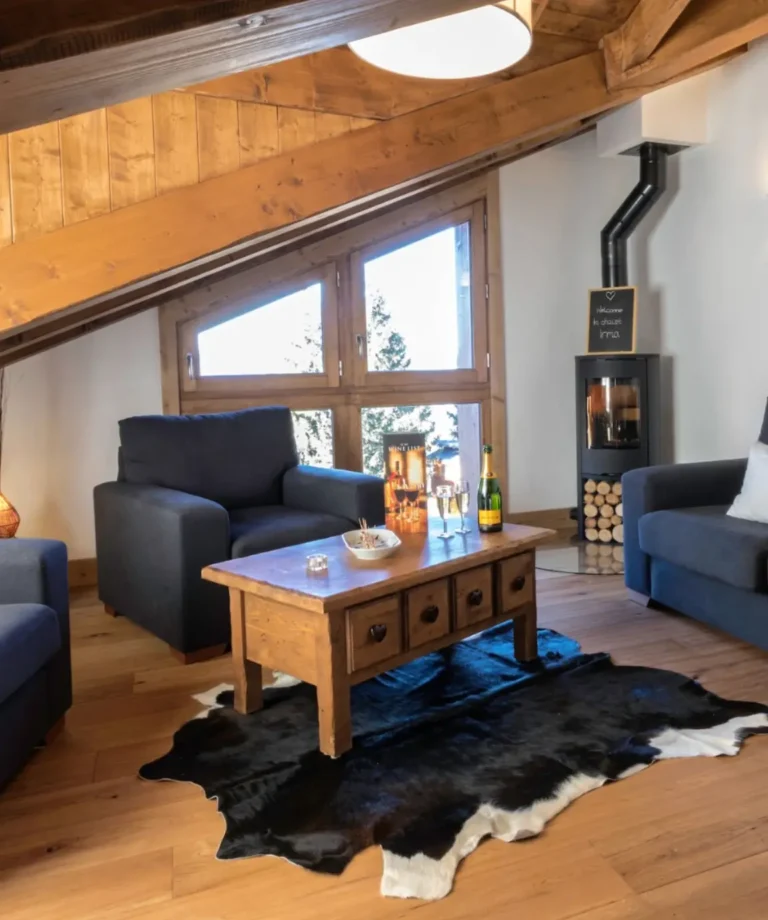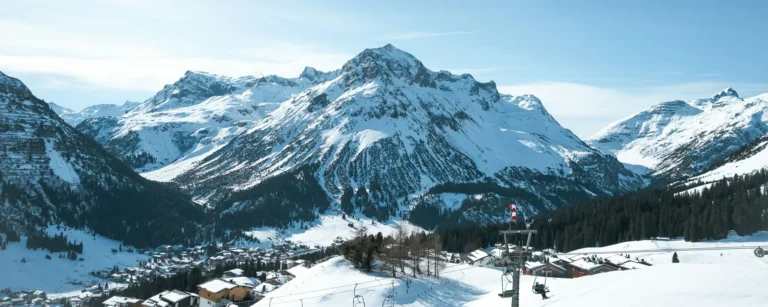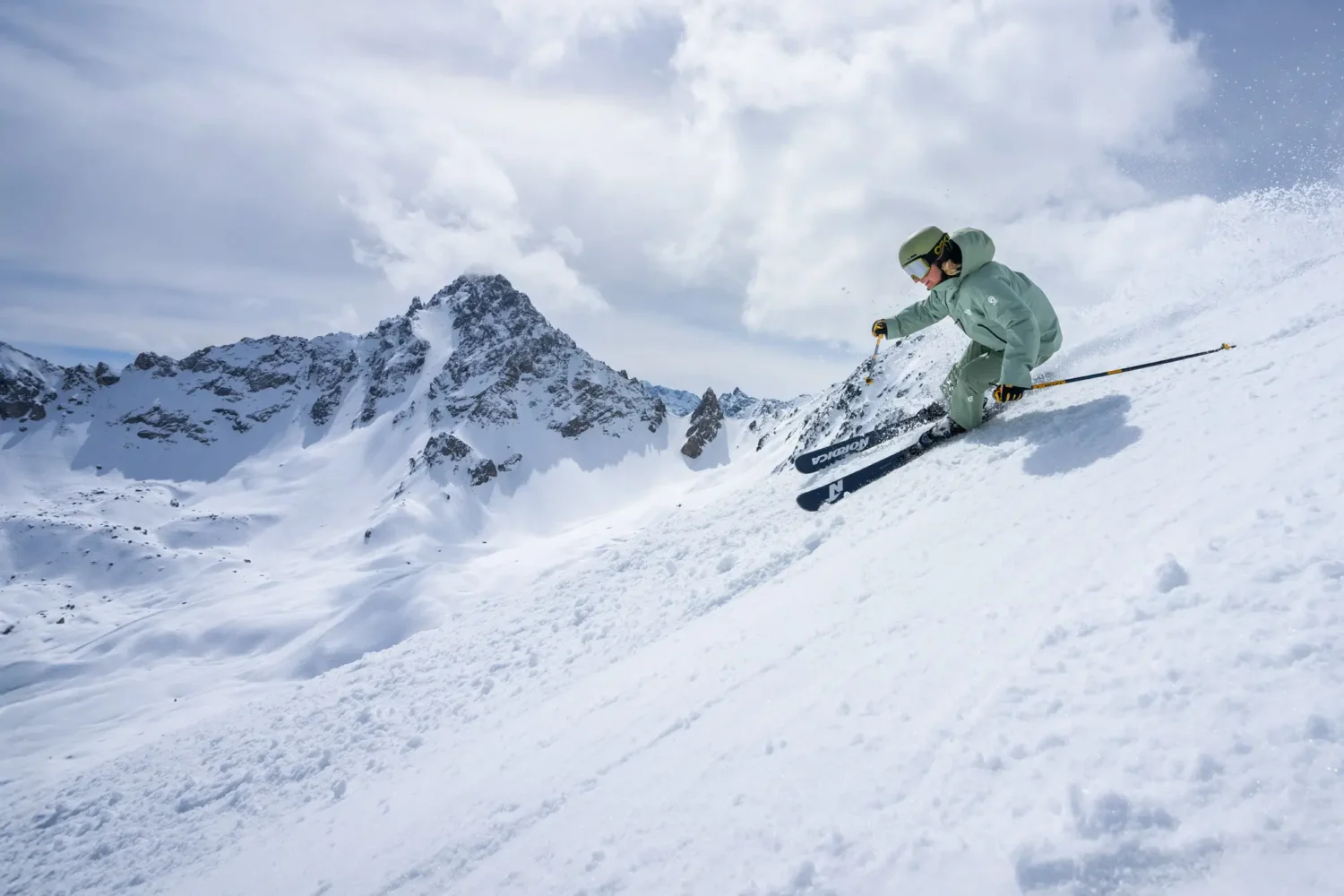If you’re an intermediate skier who can make parallel turns but still feel wobbly or unsure on the slopes, you’re not alone.
It’s common to feel like your balance on skis is stopping you from progressing. This can happen at all levels, from beginners to experts, and can be psychological, such as a fear of falling, technical, such as falling inside your turns, or tactical, like using the wrong technique in a given situation, such as being too outside foot dominant off-piste.
Balance is a key component of confident, controlled skiing. Fortunately, it’s something you can actively improve.
In this guide, you’ll discover why you lose balance, how to strengthen it both on and off the mountain, and how to ski with more confidence, precision, and ease.
Why do you lose balance when skiing?
There are a few ways to lose your balance whilst skiing:
- Standing on your inside ski (parallel): This will make it much more challenging to balance laterally through a turn – you might fall inside.
- Fatigue: Tired muscles react more slowly, compromising stability.
- Equipment issues: Ill-fitting boots or skis make it harder to stay centred.
- Terrain variability: Ice, powder, and bumps demand fast adjustments.
- Poor technique or posture: Leaning too far back / forward or not having correctly flexed joints.
Identifying your challenge is the first step toward improvement.
There are two ways to lose your balance on skis: fore-aft (forward-backwards) or laterally (side to side). Sometimes, your balance can be off in either direction or a combination of both.
Losing your balance in either direction can result from different causes and will affect your skiing in different ways.
How to improve skiing balance: 6 essential steps
Improving your skiing balance is about building habits, strength, and technical awareness.
Here’s how:
1. Mastering the basics
Strong basics are the best foundation.
Mastering skiing fundamentals will massively increase your balance. Fundamentals to work on include standing on your outside ski throughout a turn, correct posture, and developing a strong pole plant.
2. Find your neutral stance
Develop a stable foundation on your skis.
Learn to feel centred by flexing your ski boots with your ankles and knees over your ski boots whilst your hips remain in a centred position. Practice this stance on flat terrain until it feels natural. Having a strong core will also aid a neutral, stable stance.
3. Master balance drills
Use on-slope exercises to boost stability.
Try different drills to stimulate your stabilising muscles and improve coordination.
4. Build core strength
Train stability muscles off the mountain.
A strong core helps you react quickly to changes in terrain. Pilates, planks, and rotational exercises are excellent for skiing.
5. Perfect your equipment setup
Get the right boot fit and ski type.
A professional boot fitter will be able to ensure your boots match your foot and ability. Very loose-fitting boots will be much more difficult to flex. If you try to flex a boot that is too big for you, it’ll likely result in the foot moving within the boot instead.
Choose skis with appropriate flex and width for your level and preferred terrain.
6. Practice dynamic movements
Learn to adapt to changing slopes.
Balance isn’t static. Skiing steeps, rollers, and varying snow requires fluid adjustments. Practice recovering your balance in these difficult situations. Stretching can help, too, as a healthy range of motion is important to deal with any balance upsets you encounter.
7. Get professional instruction
Accelerate progress with expert feedback.
An instructor helps identify hidden habits and customises drills to your specific needs. Just a few focused sessions can create breakthroughs.
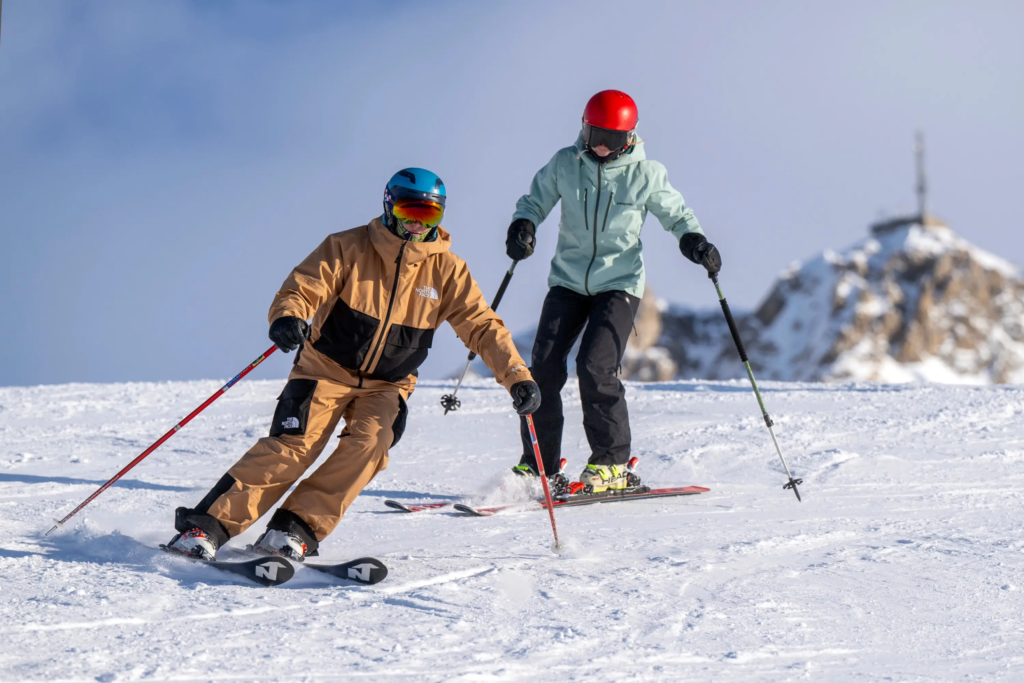
Skiing balance exercises you can do at home
Equipment-free exercises:
- Single-leg stands: Improve ankle and hip stability.
- Heel-toe walking: Enhances coordination and foot control.
Core strengthening routine: Planks, bridges, and leg raises. - Yoga poses for skiers: Warrior III, Tree Pose, and Chair Pose.
With equipment:
- Balance board training: Daily 10-minute routine to mimic ski balance.
- BOSU ball exercises: Squats and lunges to simulate terrain shifts.
- Slackline practice: Develop advanced coordination and micro-adjustment.
- Resistance band work: Side steps, kicks, and rotations for ski-specific muscle groups.
On-mountain balance drills that work
Beginner drills:
- The Shuffle Drill: Shuffle your skis back and forth to move forward on a flat.
- Hop Training: Small hops can help you practice recentring after a distructivre movement bettering your reactive strength and control.
- One ski scooting: Put one ski on a flat, then push off with your other foot to move about.
Intermediate drills:
- One-ski challenges: Lift your inside ski to isolate balance control.
- Terrain adaptation: Ski rollers and gentle bumps to stay centred.
- Speed variations: Ski slow and fast to test your balance consistency.
- Turn shape practice: Mix short and long turns for versatility.
Advanced drills:
- Variable conditions: Tackle ice, powder, and crud confidently.
- Open boot skiing: Ski with your boots open and remain centred.
- One ski skiing: Leave one of your skis safely at the top of a T-bar or Button lift. Ski to the bottom, practising short radius turns on one ski using your pole plant.
- Blindfold skiing: shuffle your skis back and forth on a flat without visual guidance. Mastered this? Try to ski top to bottom of a green run whilst blindfolded – Make sure you’ve got a spotter so that you don’t ski into anybody or anything.
The science behind skiing balance
Three balance systems:
- Visual system: Your eyes track terrain and horizon for orientation.
- Vestibular system: Inner ear signals motion and helps adjust head position.
- Proprioceptive system: Muscle and joint sensors tell your brain where your body is in space.
Physics of ski balance:
- Weight distribution: Fore-aft and lateral shifts affect grip and glide.
- Centre of gravity: A low, stable COG makes reactions quicker.
- Forces on skis: Gravity, centrifugal force, and snow resistance interact constantly.
Further learning and trusted resources
For fitness and sports science guidance, the American College of Sports Medicine (ACSM) provides evidence-based recommendations on physical conditioning, endurance, and injury prevention—all of which are key to building the stamina and balance needed for skiing.
Equipment for improving skiing balance
Equipment factors:
- Proper boot fit and custom footbeds to enhance proprioception.
- Correct ski length and stiffness.
- Correctly using Poles.
- Best lenses for light conditions.
Balance training gear:
- Indo Boards, balance discs, BOSU balls, slacklines, resistance bands.
- Apps and wearables with motion tracking can give real-time feedback.
- General gym training will help you increase your strength and balance.
- Ski trackers such as Carv will help you quantify any balance adjustments you’ve made.
Age-specific balance strategies
Young skiers (Under 18):
- Emphasise coordination games, speed, and agility drills.
- Use natural flexibility for dynamic movements.
- Work on strong fundamentals
Adult skiers (18 – 65):
- Integrate fitness with technical advice.
- Focus on strength building, particularly within the legs and core.
- Develop on fundamentals.
Mature skiers (65+):
- Prioritise joint-friendly exercises.
- Combine balance work with mobility and endurance training.
- Be selective about the areas that you ski in.
Troubleshooting: Fix your balance problems
“I always lean back on steep slopes”
Solution: Build stronger fundamentals on shallower slopes. If you need to ski steeper slopes, create small smooth turns to top the skis running away from you, whilst having a pole plant to help keep your centre of mass centred. Always ensure that you’re flexing your boots if you find yourself unable to try lifting your toes to aid in closing the angle between the top of your foot and your shin.
“I can’t stay centred in turns”
Solution: If you’re skiing on the piste, ensure that your weight is balanced against your outside ski through the turn. This will enable you to build a solid platform against which to balance. Using a pole plant will also help to keep you centred. If you aren’t flexing your boots, then this could be symptomatic of having your centre of balance too far backwards, so ensure that you’re flexing your boots.
“I lose balance in bumps/powder”
Solution: Work on terrain-specific techniques. A strong poleplant is essential in bumps and powder, as is a narrower stance. In powder, you’ll also want to ski more two-footed (Keep a more similar weight distribution between your two skis).
“My balance gets worse when tired”
Solution: Work on stamina before your ski trip. If you’re already tired and looking to continue skiing, be more selective of where you ski. Avoid bumpy terrain and heavy slushy snow, as this is the most energy-sapping terrain.
When skiing, your muscular endurance will be tested much more than your cardiovascular endurance. Think about building stamina through a plank or wall sit rather than a cardiovascular exercise, although many cardio exercises can also build muscular endurance.
Professional instruction: Why it accelerates progress
Benefits of ski school:
- Objective technique assessment and personalised improvement steps.
- Outside-of-the-box lesson drills and progressive lesson planning.
- Motivation, encouragement and enjoyment.
New Generation advantage:
At New Generation, our certified instructors specialise in helping intermediate skiers gain confidence. With small groups and private options in Europe’s top resorts, we’ll help you ski better, faster.
Discover our Group Intermediate Ski Lessons designed to help you refine your technique and gain confidence.
Your 4-week balance improvement plan
Week 1: Developing strength and flexibility
Build strength and improve range of motion through balance training, gym work and stretching to improve range of motion.
Week 2: Dynamic balance development
Build on strength and flexibility progress with BOSU balance training and balance and movement drills.
Week 3: Foundation building
Refine the basics. Master fundamentals such as stance and poleplant, with a focus on your outside ski.
Begin skiing with drills on varied terrain. Track progress and review feedback.
Week 4: Mastery
Ski more technically challenging terrain that tests balance, such as ice, bumps and variables, with greater speed to work on and balance recovery skills. Use on snow balance drills and book an instructor for personalised feedback.
Conclusion
Balance is a skill you can train—and doing so unlocks control, confidence, and enjoyment on the mountain. The best drills, mindset, and guidance, can help to transform your skiing.
Ready to transform your skiing balance?
Book lessons with New Generation’s instructors across Europe’s premier ski resorts and start skiing with confidence today. Contact us to find out more.
